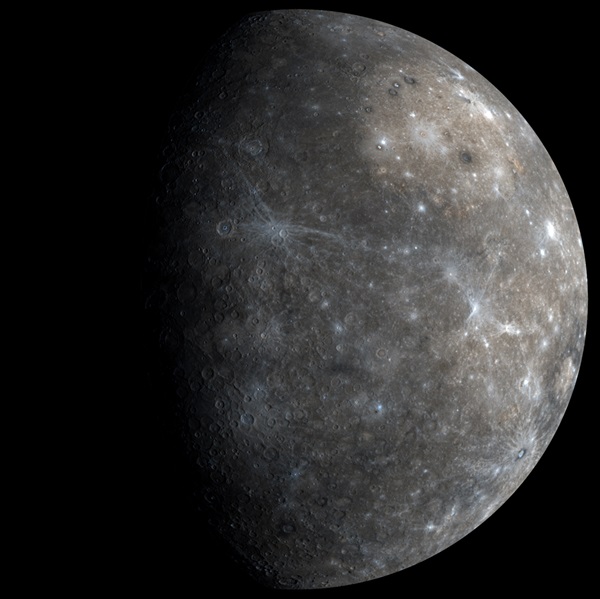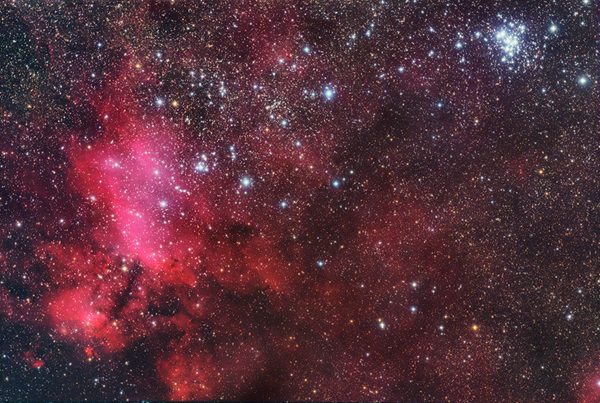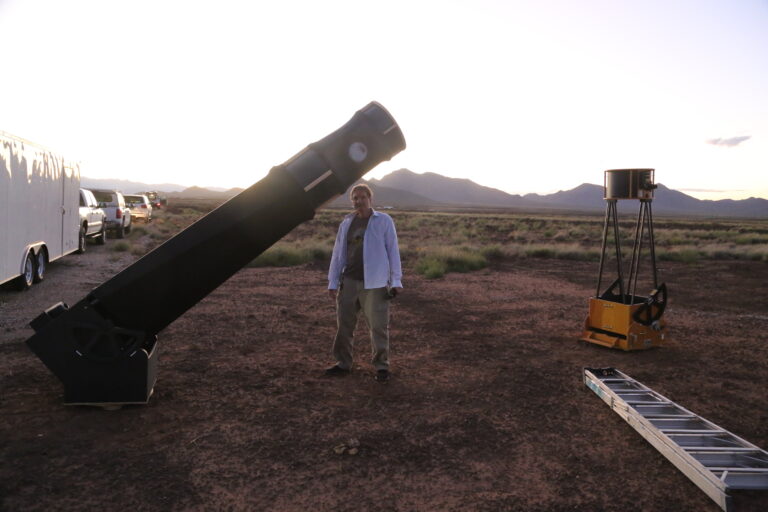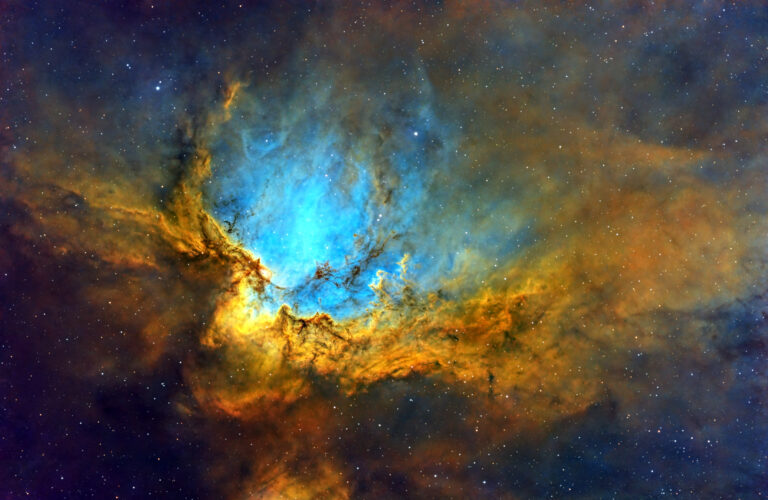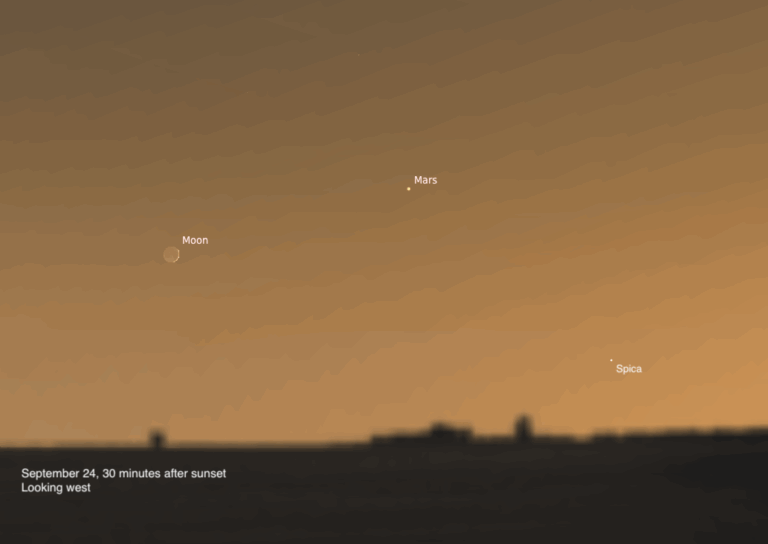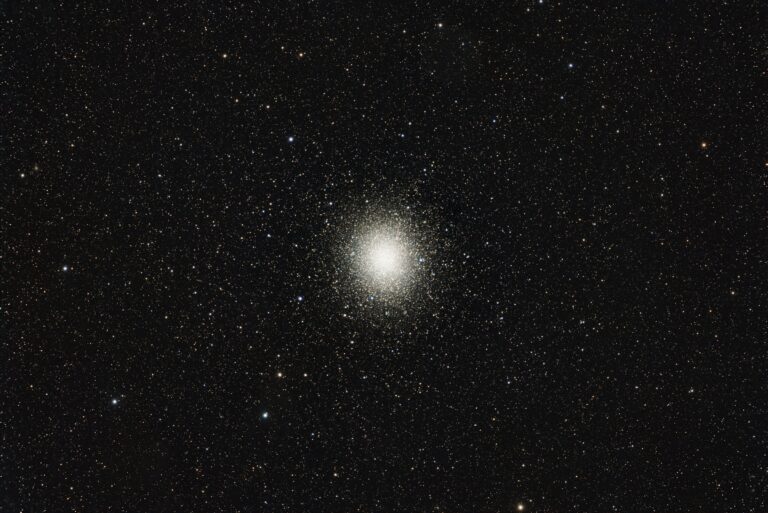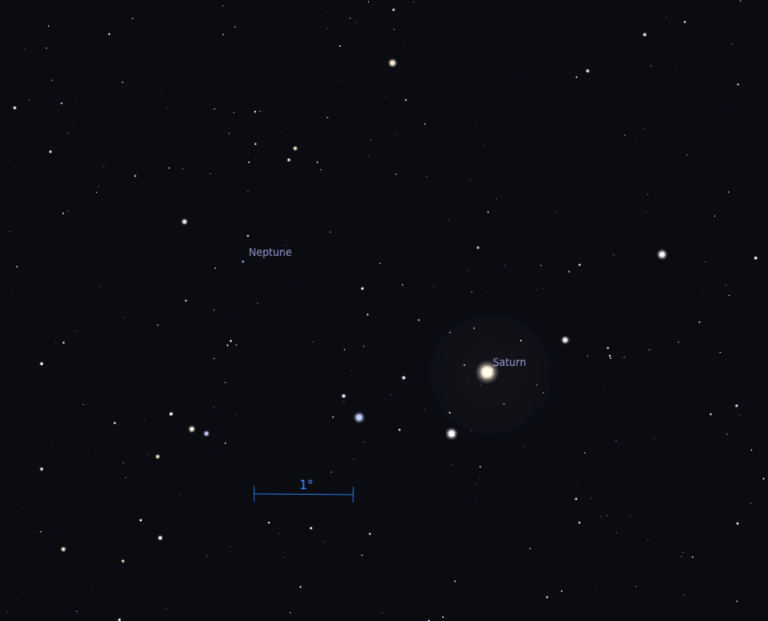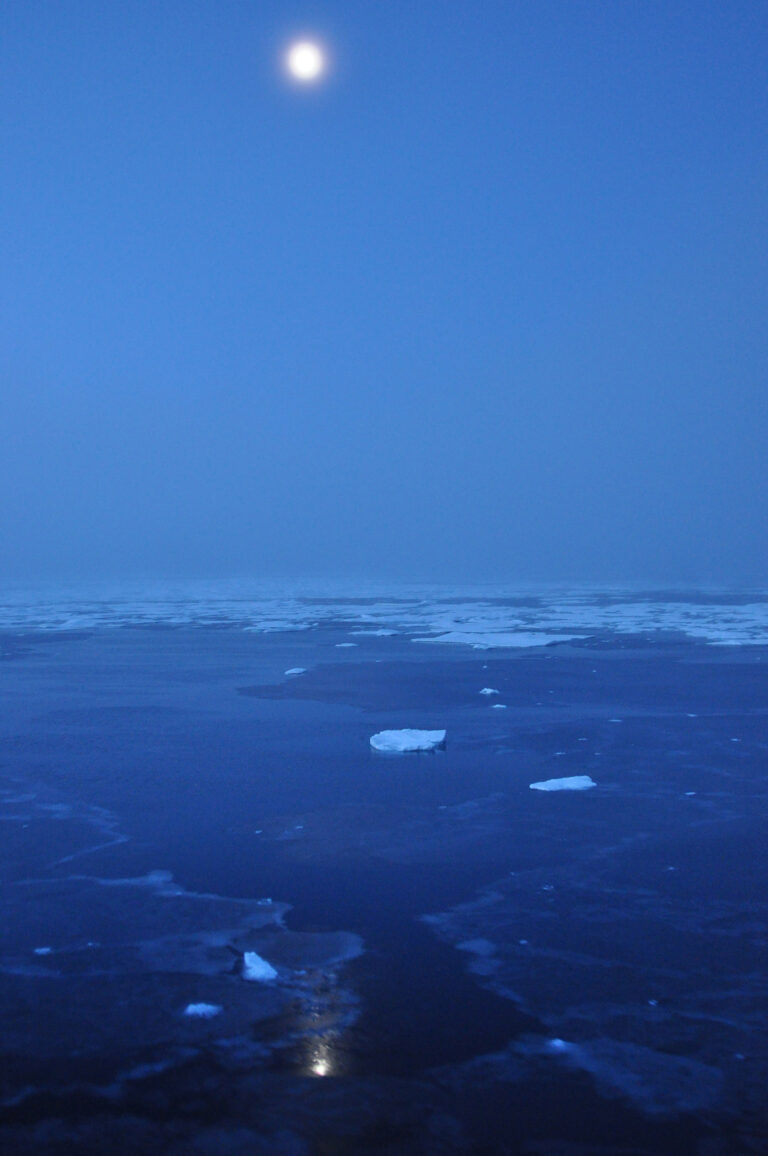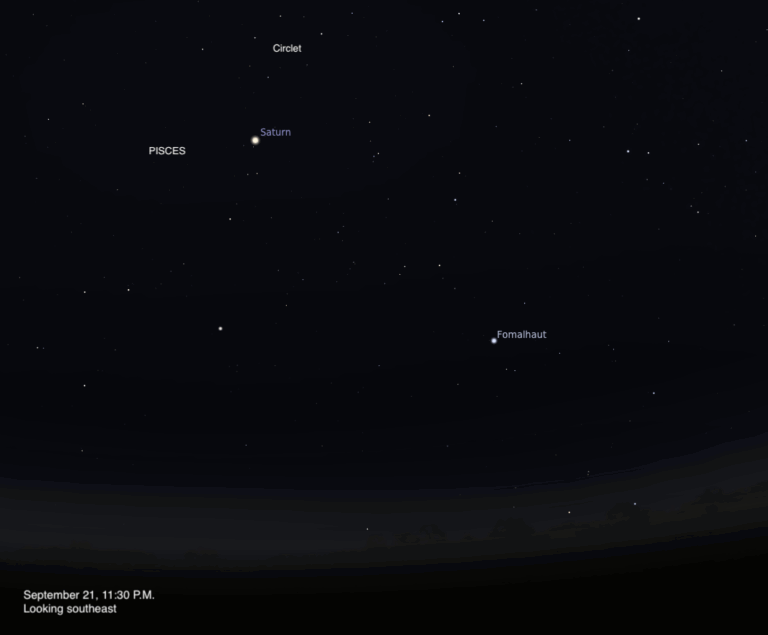Key Takeaways:
Earth’s summer solstice arrives at 11:54 a.m. EDT, when the Sun reaches its farthest point north in the sky. This marks the official beginning of summer in the Northern Hemisphere, and the day of the solstice has more hours of sunlight than any other. For astronomy buffs, however, long days translate into short nights and extended twilight, which limit our time under the stars.
Neptune’s eastward motion against the background stars comes to a halt at midnight EDT. This so-called stationary point marks the beginning of the best period to observe any outer planet. Neptune rises around 12:30 a.m. local daylight time and appears about 30° high in the southeast as morning twilight commences. The magnitude 7.9 planet lies in Aquarius, 1.3° east-northeast of 4th-magnitude Phi (φ) Aquarii. You can confirm your sighting of Neptune through a telescope, which reveals the planet’s 2.3″-diameter disk and blue-gray color.
Saturday, June 22
Look high in the northwest after darkness falls this week and you’ll be greeted by the familiar sight of the Big Dipper. You can use the dipper — the sky’s most conspicuous asterism, a recognizable pattern of stars that doesn’t form a complete constellation shape — to find two of the early summer sky’s brightest stars. If you follow the curve of the handle to the south, you’ll easily spot Arcturus. This magnitude 0.0 star, which belongs to Boötes the Herdsman, lies some 30° from the end of the Big Dipper’s handle. It is the fourth-brightest star in the whole sky and the second-brightest visible from mid-northern latitudes. And if you continue the curve another 30° past Arcturus, you’ll arrive at magnitude 1.0 Spica, the luminary of Virgo the Maiden. An easy way to remember the two is with the phrase: “Follow the arc to Arcturus, then drive a spike to Spica.”
Mercury reaches greatest elongation at 7 p.m. EDT, so today marks the peak of its current evening apparition. The innermost planet lies 25° east of the Sun and appears 11° high in the west-northwest 30 minutes after sunset. It shines at magnitude 0.4 and should show up easily to the naked eye, although don’t hesitate to sweep the area with binoculars to find its position. If you view Mercury with a telescope this evening, you’ll see that its 8″-diameter disk is about 40 percent lit.
The Moon reaches apogee, the farthest point in its orbit around Earth, at 3:50 a.m. EDT. It then lies 251,375 miles (404,548 kilometers) from Earth’s center.
Monday, June 24
Jupiter reached opposition and peak visibility just two weeks ago, and it remains a stunning sight all night. It appears low in the southeast during evening twilight and climbs highest in the south around midnight local daylight time. Shining at magnitude –2.6, it is the night sky’s brightest celestial object with the exception of the Moon and Venus, which doesn’t rise until morning twilight is well underway. It also stays visible throughout the night among the background stars of southern Ophiuchus. When viewed through a telescope, the planet’s disk spans 46″ and shows intricate cloud-top detail.
Tuesday, June 25
Last Quarter Moon arrives at 5:46 a.m. EDT. It rises in the east shortly after 1 a.m. local daylight time and climbs higher in the southeast as dawn approaches. During this period, our half-lit satellite lies among the background stars of southern Pisces the Fish.
Wednesday, June 26
Mars’ days as an evening object are dwindling to a precious few. The Red Planet appears 7° high in the west-northwest 45 minutes after sunset and dips below the horizon around 10 p.m. local daylight time. The easiest way to find the magnitude 1.8 planet is to use Mercury as a guide. Center the innermost planet in your binoculars and then look for a fainter point of light near the lower right edge of your field of view.
Thursday, June 27
Venus pokes above the horizon in the east-northeast 55 minutes before sunrise. The planet shines at magnitude –3.8 and appears conspicuous in the morning twilight if you have a clear and unobstructed horizon. A view of the inner planet through a telescope shows a nearly full disk that spans 10″.
This week offers a good opportunity for binocular users to track down one of summer’s finest open star clusters. NGC 6231 lies in the tail of Scorpius the Scorpion, just 0.5° north of the double star Zeta () Scorpii (which is another fine binocular sight). NGC 6231 shines at magnitude 2.6 and packs more than 100 stars into a region just 14′ in diameter. This part of Scorpius lies nearly due south between 11 p.m. and midnight local daylight time, though it doesn’t climb high from mid-northern latitudes.
Saturday, June 29
For people who live near 35° north latitude, today marks the latest sunset of the year. Although Earth’s summer solstice and the Northern Hemisphere’s longest day occurred on the 21st, latest sunset happens several days after and earliest sunrise several days before. The specific dates depend on your latitude, however. In general, latest sunset occurs closer to the solstice the farther north you live.
Sunday, June 30
Saturn will reach its peak at opposition in less than two weeks, though it looks nearly as good now. The ringed world shines at magnitude 0.1 against the background stars of northern Sagittarius, a region that stands some 15° high in the southeast as twilight fades to darkness. If you target Saturn through a telescope, you’ll see its 18″-diameter disk surrounded by a beautiful ring system that spans 42″ and tilts 24° to our line of sight.


